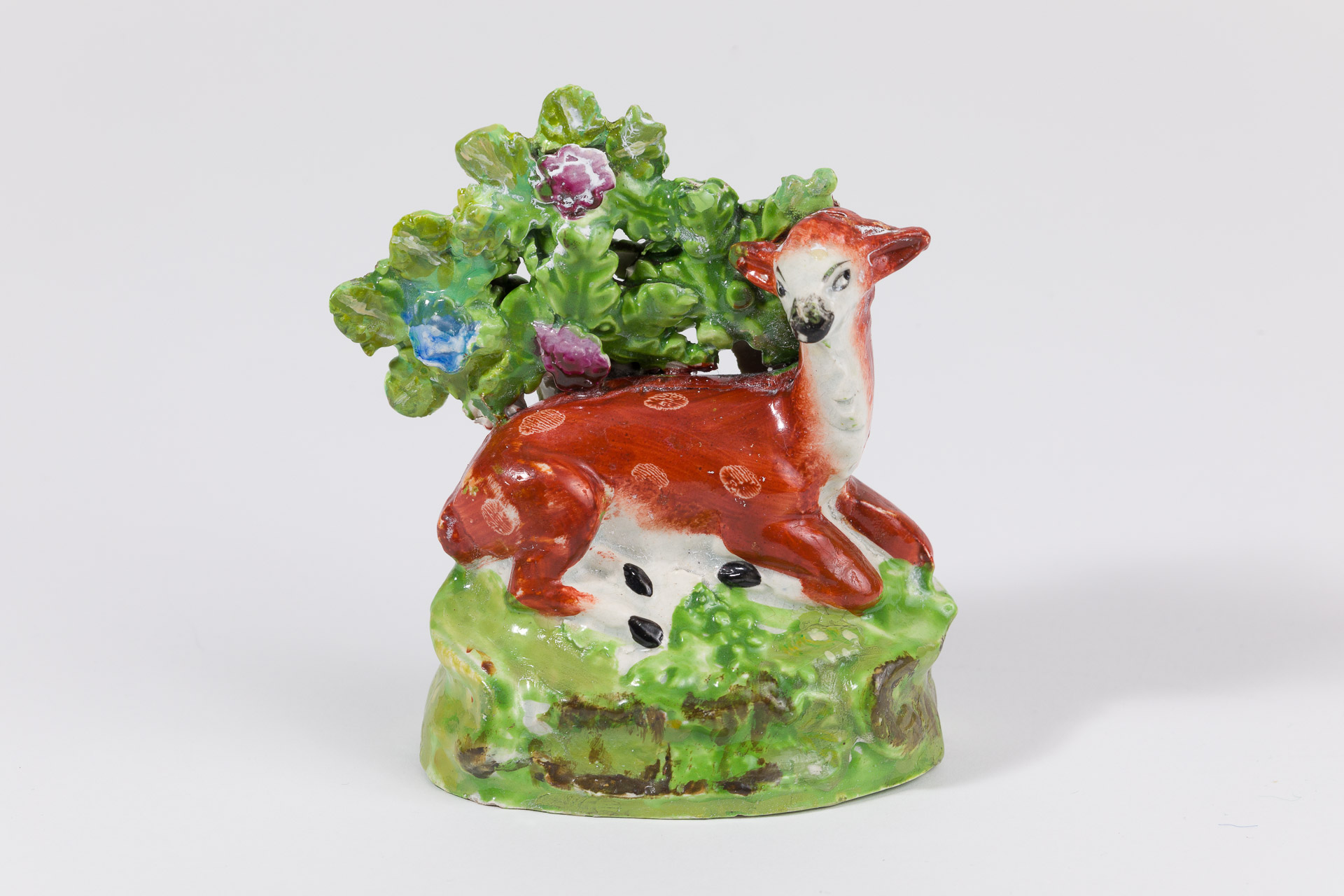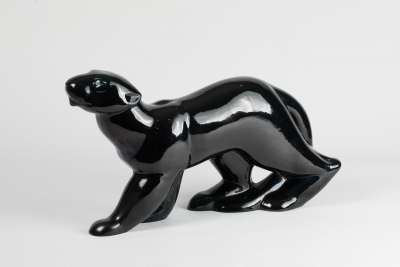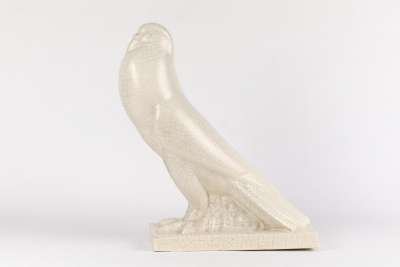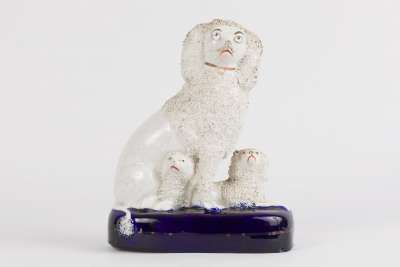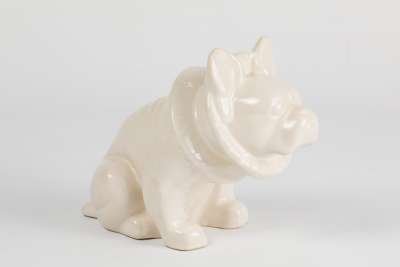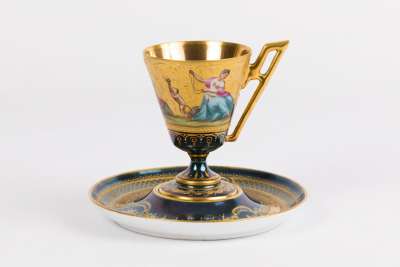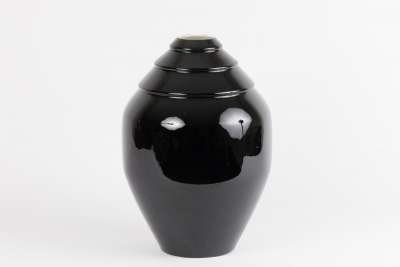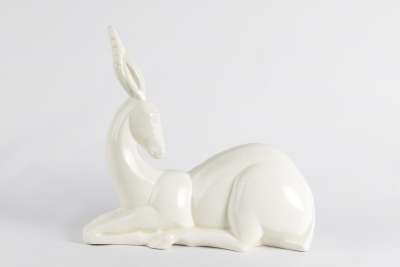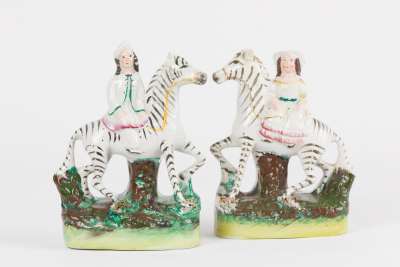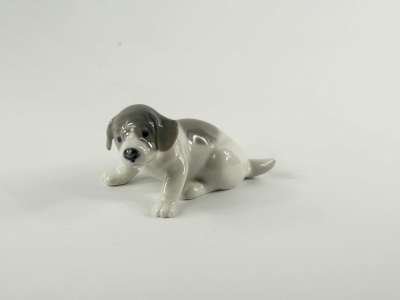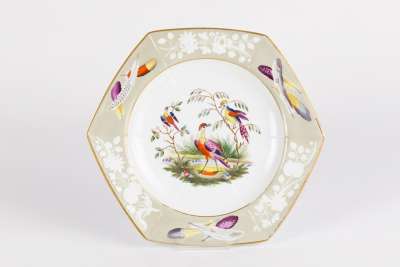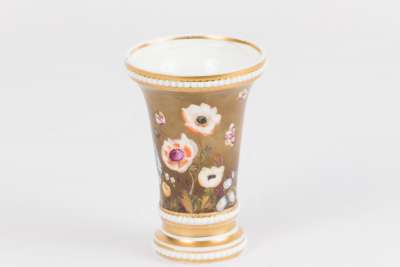This charming Staffordshire Deer figurine dates back to circa 1825, capturing the essence of early 19th-century English ceramic craftsmanship. The piece features a delicate portrayal of a deer standing gracefully atop a green mound base, set against a backdrop of floral and leafy bocage. The intricate detailing of the deer, combined with the vibrant colours of the foliage, showcases the skill and artistry of the period. Originating from Staffordshire, England, a region renowned for its pottery, this figurine embodies the characteristic style and charm of its time.
Condition Report
This Staffordshire Deer figurine is in good condition, consistent with its age and historical use. Notable wear is present, which is typical for antique ceramics of this period. The foliage has undergone old restoration, which has been expertly executed to maintain the piece's integrity. The restoration is subtle, allowing the piece to retain its historical character and charm. Despite these restorations, the figurine remains a delightful example of early 19th-century Staffordshire pottery.
Dimensions
Weight: 115gm, Length: 8cm, Width: 5cm, Height: 10.5cm.
Decorative Figurine for Display
This Staffordshire Deer was originally crafted as a decorative piece, intended to adorn the mantelpieces and display cabinets of 19th-century homes. Its charming and intricate design would have been a conversation starter, reflecting the owner's appreciation for fine craftsmanship and the pastoral beauty of nature. As a decorative figurine, it serves as a testament to the era's cultural appreciation for ceramic art and naturalistic motifs. Its modest size makes it a versatile piece, suitable for various display settings in a contemporary context.
Fine Example of Staffordshire Pottery
The Staffordshire region of England is celebrated for its ceramic production, particularly during the 18th and 19th centuries. This figurine is a quintessential example of Staffordshire pottery, known for its detailed modelling and vibrant glazes. The use of natural themes, such as the deer and bocage, is typical of the period and reflects the broader Romantic movement's influence on decorative arts. Collectors of Staffordshire pottery value these pieces for their historical significance and the distinct characteristics that define the region's output.
The Craft of English Ceramic Modelling
The creation of this Staffordshire Deer involved meticulous hand-modelling, a testament to the intricate craftsmanship typical of the era. The figurine was likely moulded from clay, with details added by hand before being fired in a kiln. The vibrant colours and detailed patterning of the bocage would have been applied using underglaze and overglaze techniques, with the final product resulting from multiple firings. This method of production highlights the skill and patience required to produce such detailed ceramic pieces during the early 19th century.
Attributed to Staffordshire Artisans
While specific makers of such figurines often remain anonymous, this piece can be confidently attributed to the skilled artisans of Staffordshire, who were renowned for their ceramic artistry. These craftsmen were adept at creating intricate and lifelike representations of animals and nature, a skill honed through generations of pottery-making. Staffordshire potters were particularly known for their ability to imbue their creations with character and charm, making them highly sought after both in their own time and by present-day collectors.
Collected by Enthusiasts of 19th-Century Ceramics
Staffordshire figurines, such as this deer, hold a special place in the hearts of collectors of 19th-century ceramics. Their historical value, combined with the unique charm and character of each piece, makes them desirable additions to any collection. Collectors are drawn to the figurines' ability to capture moments of natural beauty and pastoral life, a reflection of the era's cultural and artistic values. As such, these pieces are not only appreciated for their aesthetic appeal but also for the stories they tell about a bygone age of English ceramic production.
